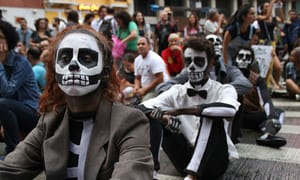정준모
What's the biggest question facing artists today?

Tacita Dean
Tacita Dean
Artist
I think the biggest problem for artists is balancing a need for the market with a detachment from it. The demise of public funding and the overbearing existence of large, commerce-oriented galleries that even museums rely on these days, has distorted the capacity of artists to work freely. We are increasingly mollified by commercial obedience. There needs to be plurality again: other ways, more confusion, fewer defined routes.
Rivane Neuenschwander
Artist

Recently, artists and cultural institutions in Brazil have been censored and subject to attacks by ultra-conservative groups and politicians. This is both very serious and dangerous, putting our already fragile democracy at risk. We are experiencing a period of profound social inequality, times of intolerance and polarisation worldwide, where the discourse of fear and hatred has rapidly dominated and impoverished discussions.


The big question for us all – but particularly for artists because it’s more pressing – is, essentially, can we bite the hand that feeds us? The economic make-up of the 21st century has forced us to shy away from more fundamental questions. An artist is now someone who sells work through a commercial system, to people they might not know, whose political and social affiliations they might not know. As a director, you wonder how long those contradictions are sustainable. Your exhibition might be sponsored by people who you oppose.
How many galleries in the US have Trump supporters as their major donors? How does that sit with the more progressive curatorial decisions? Equally, how does the ICA behave with those contradictions? I mean, at least we can talk about them, rather than pretending they’re not there.
Then there is the question of education in general, and art education in particular. Why is it that a society that largely communicates through visual media then deprives generations of young people of an arts education? To do so essentially produces a visual illiteracy, so people can’t understand or read the world. They cannot understand that the world projected at them has social, economic preconditions and interests behind them. In a world that is saturated by image, where ideologies talk to each other through imagery, it is a basic human right to understand how images are produced, circulated and distributed. It’s like learning a language or learning the alphabet. Isn’t looking after the people the basic foundation of any politics? Why would it ever be interesting to introduce tuition fees and reduce people’s access to education? The same for healthcare. Why should it be difficult? Shouldn’t it always be government’s prime mandate to produce a well-educated and healthy society? We could get more political and say, “Why is it always conservative governments that do this?” There isn’t a liberal or social democratic element that would do that. You very, very rarely get well-educated fascists or racists.
Jeremy Deller
Artist
“WTF?” That’s the question facing artists today.
Marina Abramović
Artist





My biggest concern is equality for women artists and affordable housing: the practicality of making a living and being a practising artist is daunting. Perseverance, my fellow artists! And be authentic with your practice.
In a world in which political upheaval seems to be at every turn, I think one of the larger questions is: what type of artist do I want to be? There is no right or wrong answer; it is important to know that the artist’s voice and work can span a larger discourse in relationship to contemporary culture, politics and practice.

FAMILY SITE
copyright © 2012 KIM DALJIN ART RESEARCH AND CONSULTING. All Rights reserved
이 페이지는 서울아트가이드에서 제공됩니다. This page provided by Seoul Art Guide.
다음 브라우져 에서 최적화 되어있습니다. This page optimized for these browsers. over IE 8, Chrome, FireFox, Safari